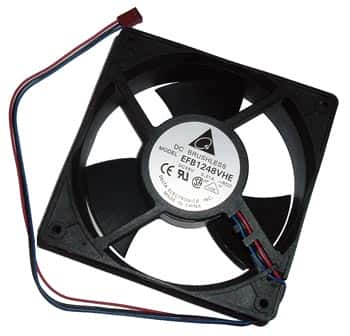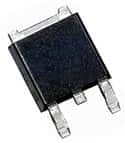Most high-voltage applications like power inverters, modern electric vehicles, and industrial control systems use IGBTs or Insulated Gate Bipolar Transistors, as they offer high-efficiency switching. However, as power densities are constantly on the rise in today’s electronics, the systems are subjected to greater demands. This necessitates newer methods of control. Littelfuse has developed new TVS diodes as an excellent choice to protect circuits against overvoltages when IGBTs turn off.
Most electronic modules and converter circuits contain parasitic inductances that are practically impossible to eliminate. Moreover, it is not possible to ignore their influence on the system’s behavior. While commuting, the current changes as the IGBT turns off. This produces a high voltage overshoot at its collector terminal.
The turn-off gate resistance of the IGBT, in principle, affects the speed of commutation and the turn-off voltage. Engineers typically use this technique for lower power level handling. However, they must match the turn-off gate resistance for overload conditions, short circuits, and for a temporary increase in the link circuit voltage. In regular operation, the generation of the overshoot voltage typically increases the switching losses and turn-off delays in the IGBTs, reducing the usability and or efficiency of the module. Therefore, high-power modules cannot use this simple technique.
The above problem has led to the development of a two-stage turn-off, with slow turn-off and soft-switch-off driver circuits, which operate with a gate resistance that can be reversed. In regular operations, the IGBT is turned off with the help of a gate resistor of low ohmic value, as this minimizes the switching losses. For handing surge currents or short circuits, this is changed to a high ohmic gate resistor. However, this also means that normal and fault conditions must be detected reliably.
Traditionally, the practice is to use an active clamp diode to protect the semiconductor during the event of a transient overload. The high voltage causes a current flow through the diode until the voltage transient dissipates. This also means the clamping diode is never subjected to recurrent pulses during operation. The IGBT and its driver power limit the problem of repetitive operation, both absorbing the excess energy. The use of an active clamp means the collector potential is directly fed back to the gate of the IGBT vial an element with an avalanche characteristic.
The clamping element forms the feedback branch. Typically, this is made up of a series of TVS or Transient Voltage Suppression diodes. When the collector-emitter voltage of the IGBT exceeds the approximate breakdown voltage of the clamping diode, it causes a current flow via the feedback to the gate of the IGBT. This raises the potential of the IGBT, reducing the rate of change of current at the collector, and stabilizing the condition. The design of the clamping diode then determines the voltage across the IGBT.
As the IGBT operates in the active range of its output characteristics, the energy stored in the stray inductance of the IGBT is converted to heat. The clamping process goes on until the stray inductance is demagnetized. Therefore, several low-voltage TVS diodes in series or a single TVS diode rated for high voltage are capable of providing the active clamping solution.



